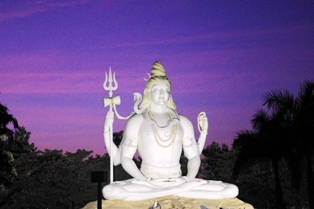Discovering the West through an eastern eye
 When I
first started reading about France, it was with reference to the renaissance
and French revolution. The authors who inspired me were Maupassant with his
short stories and travel stories, Victor Hugo’s Les Miserables’, Alexander Dumas complete works, Voltaire and
Rousseau’s philosophies and play-writes and off course Charles Dickens’s- A Tale
of Two cities. Having guarded with history, I ventured to Paris, to learn good
art, after I was convinced by Neil Gaiman’s commencement speech of 2012- “Make
good art”. To make good art, one needs to appreciate and learn good art also and
the Mecca of such treasure is in De Louvre in Paris.
When I
first started reading about France, it was with reference to the renaissance
and French revolution. The authors who inspired me were Maupassant with his
short stories and travel stories, Victor Hugo’s Les Miserables’, Alexander Dumas complete works, Voltaire and
Rousseau’s philosophies and play-writes and off course Charles Dickens’s- A Tale
of Two cities. Having guarded with history, I ventured to Paris, to learn good
art, after I was convinced by Neil Gaiman’s commencement speech of 2012- “Make
good art”. To make good art, one needs to appreciate and learn good art also and
the Mecca of such treasure is in De Louvre in Paris.
The Palais
du Louvre, museum is so vast that, it is impossible to cover it in one day, so
I just concentrated on the Denon wing which houses the Italian and Greek works
and few of Egyptian and Islamic art. The Greek, Etruscan and Roman Antiquities
along with the department of paintings are the oldest in the Louvre. Since
2004, the Louvre’s former stables and the Salle du Manege’ have housed the
antique sculptures from the collection amassed in Italy during the rediscovery
of Antiquity.Like the
Fontaine Aux Satyres, this is Albani collection ( 1692-1779), this piece was
housed in Jardine de la Villa Albani, Rome and then it came to France in 1797
under the rule of Louis XVIII.
Another
great art by a French painter- Theodore Gericault – The Raft of the Medusa,
1819, oil on canvas. This painting captures the tragic shipwreck in 1816 of the
Medusa off the coast of Africa. Out of 149 shipwrecked sailors only 15 of them
survived. Gericault chose to depict a moment of hope, as a ship appears to save
them.
Finally I
reached the alter of the great master, Leonard De Vinci- Mona Lisa also known
as La Giaconda- 1503-1506. Oil on wood. The famous smile of Lisa Gheredini, the
delicate hand position, the serene beauty of her face and the mystery of the
imagery landscape in the background all contribute to the fame of this
universal icon- which has become the ultimate symbol of the Louvre. The massive
crowd assembled in front of this painting reminded me of visiting a shrine in Jammu
in India. I realized for the first time the basic line dividing east and west.
In East, this kind of crowd is found mainly in the holy places and in West, a
throng of this variety was seen admiring a creation- Art.
Bang
opposite to Vinci’s Mona Lisa, is the master piece of another Italian artist, Paolo Callari known as Veronese- The Wedding
Feast at CANA (1562-63) Oil on Canvas. This painting was for the Benedictine
church on the Venetian island of san Giorgio Maggiore and is the largest work
in Louvre. It represents an episode from the New Testament: the moment when
Christ transformed water into wine. The artist made use of his exceptional
knowledge of perspective and color in this composition.
Coming to
the Sculpture section, Moai Head from 11th to 15th
century carved on soft rock of the Rano Raraku Volcano, draws one’s attention.
It probably depicts a god or the ancestor of a family group, raised to the
status of a deity. Gift from the Chili’s govt in 1935.
As I said
earlier, Palais du Louvre, museum is a place which requires more than a day, or
a week’s visit, so when I plan my next holiday and this time I’ll keep at least
a weeks’ time in my hand to discover Louvre again.









Comments
Post a Comment